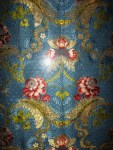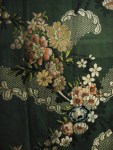I will be the first to admit that I don’t really know French. I sometimes pretend I do, though. There are plenty of sources in English regarding the ancien-régime France (see what I did there?), the French Revolutionary, Marie-Antoinette, and even the Affair of the Diamond
Necklace. You don’t need to learn French to learn about the history. But as you read, you’ll probably pick up more than a few French phrases. I know I did.
French is more than a language; it’s a state of mind. That probably sounds silly, but there’s a reason that there’s an institution (the Académie Française) that is dedicated to preserving French (and similarly, there’s a reason why there’s no equivalent for the English language; but that is neither here nor there, n’est ce-pas? See what I did there?). As a result of the Académie, modern French hasn’t deviated greatly from the version of French that was spoken by the heroes of our 18th-century misadventure. Compare that to English, which has changed markedly since the same time period. Writings from the 1700’s are perfectly understandable but sound strange (and just plain old) to modern ears. Have we lost or gained by allowing our language to morph? After all, the slight changes in language put a distance between us and the Founding Fathers (for instance). They didn’t speak quite like us and, therefore, they weren’t quite like us: they thought differently; they felt differently; they were just plain different. That conclusion isn’t precisely true, of course. But the difference in language does put a wedge between us and our ancestors. (As a side-note to my digression, the same isn’t true of, say, the Civil War era; the English of that era sounds very much more familiar to the modern ear than that of the Revolutionary era.)
The French, at least as far as language goes, don’t have the same kind of distance between themselves and their ancestors. They are, however, distanced from the past by culture. The cultural difference between ancien-régime France and modern France is, I think, greater than that between colonial America and the modern United States.
So, let’s just say you don’t know much French, but you’re studying the Affair of the Diamond Necklace (as you should!). What French phrases might you come across, what do they mean, and what do they say about 18th-century France?
Let’s start with one that’s already come up in this post:
Ancien régime: Literally, the old/former regime. More specifically, in this context the phrase means France before the Revolution. More loosely, the phrase is used to describe the government (or way of doing things) that is now passed. So, it can be used to describe the previous administration when the new one is in office.
Here is a phrase not familiar to many people, even those who study French. It has a specific place in the Affair of the Diamond Necklace: Continue reading














